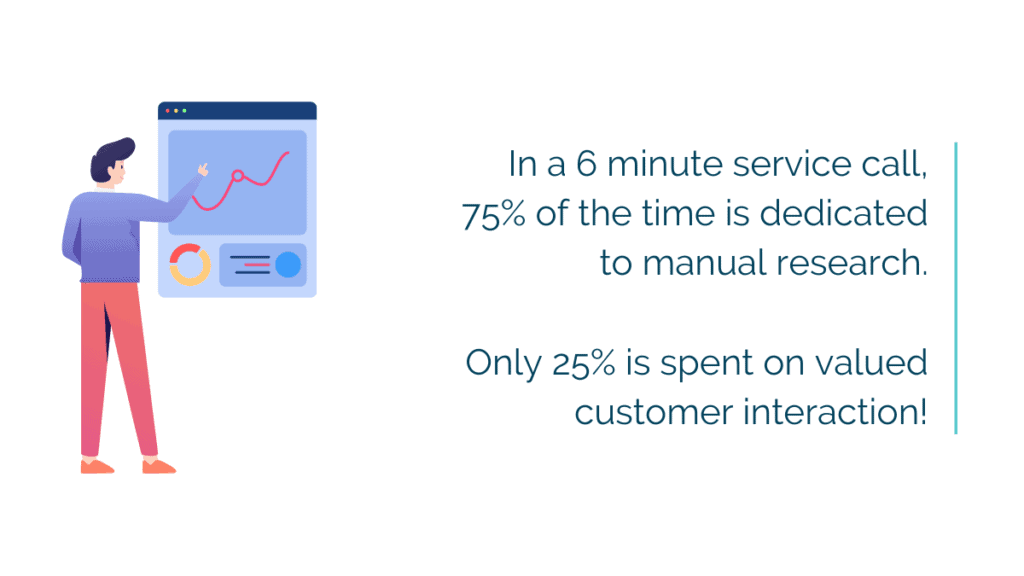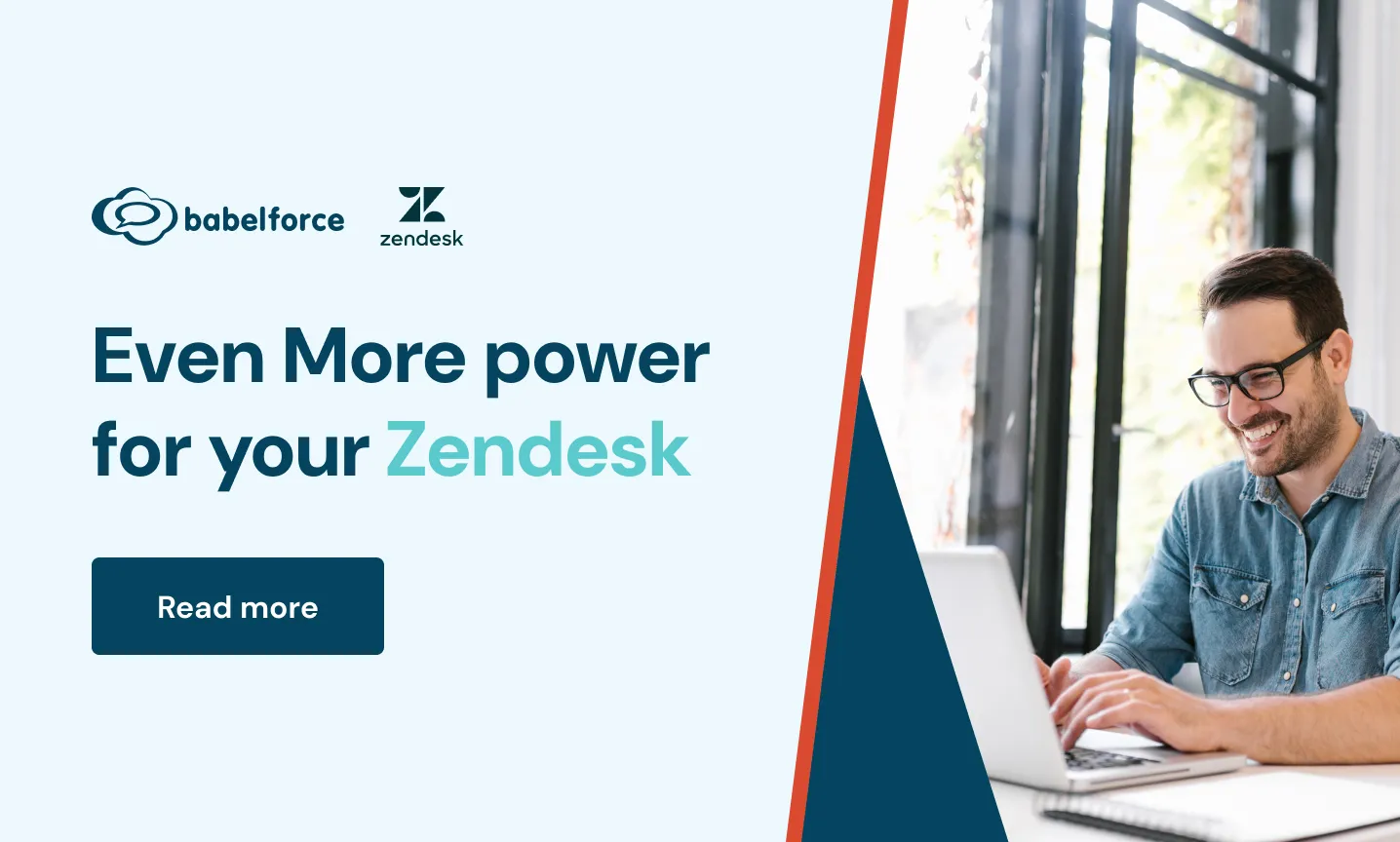Making a successful outbound call is about preparation, organization, and planning. Unfortunately, many outbound calls fail because salespeople don’t have the time to learn more about the buyer, their industry, and their needs.
Customers are constantly becoming smarter with technology, demanding a personalized customer experience.
Customer engagement opportunities have become the latest battleground in customer acquisition.
No wonder 54% of all consumers have higher customer service expectations.
This article is a step-by-step guide on making a successful outbound call and enhancing interaction with your next prospect.
(Want more articles like this in your inbox? Click here to get our fortnightly CX newsletter.)
In this post:
- Work with clear outbound call strategy and KPIs
- Provide incentives and training
- Build better call lists
- Work collectively on your scripts
- Warm-up the prospect
- Engage the prospect during the call
1. Work with a clear outbound call strategy and KPIs
Working with a clear outbound call strategy will help you outline your goals and set them in line with the overarching marketing plan.
That way, you and your team can easily measure the effectiveness of each call.
Here is how to start:
Identify one clear goal for each call
Do you want your prospect to book an appointment, complete a sale or simply participate in a survey?
You don’t want your prospect confused about the action they need to take after the call.
So, before you make that call, work with your team to identify a specific goal you want to achieve with the call.
Identify KPIs
How do you know when your outbound call is effective? Yes, the prospect made a purchase, but how long did it take you to persuade them to take that action? Identifying key performance metrics helps you track the effectiveness of your outbound calls.
Here are some vital outbound call KPIs to measure:
Average Handle Time (AHT)
AHT is the typical length of calls. Although the acceptable AHT varies from one organization to the next, 6 minutes and 10 seconds is a broad industry standard.
When an agent’s average handle time is too long, they have poor closing skills or don’t understand the product/service that well.
(You can check out some Average Handling Time Tips here.)

Conversion rate
The conversion rate measures how efficiently your agents can close deals. If the number remains low, it could mean you need to improve on your outbound calling strategy and vice versa for high rates.
First call close
When a high percentage of first calls close, it means that your agents are doing an incredible job at getting people into the sale and making their time worthwhile.
Occupancy rate
Call center occupancy rate measures how much time your agents spend on calls and what percentage of that experience is valuable.
A low average means they might not complete their after-call work efficiently. This can result in less productivity for you.

2. Provide incentives and training
Keeping your outbound contact center agent active with training and incentives will help them provide better customer service.
Regular call center training is a key to maintaining emotional and mental balance while persuading customers to take action.
So you must communicate with all staff about what they need for success, including reinforced incentives.
3. Build better call lists
You should focus on building up a client list that is fresh and targeted.
Double down on prospects’ social media footprints. This helps you get specific data and engage your prospects more confidently.
You can create an impressive customer list with babelforce’s visual tools and pre-built elements in minutes.

4. Work collectively on your scripts
A script for automated outbound calling needs to be personalized to fit your marketing strategy. For example, if your contact center agent reads from a script, they need to sound as natural as possible.
A recent study found that 51% of consumers thought their call experience was tremendously or a lot better when the agent wasn’t reading from a script.
Does this mean you need to scrap them entirely?
If you think using a script helps your agent feel more confident and calmer during the calls, try to write them in a way that lets them retain some flexibility.
A well-prepared script offers the agent a safety net if they’re struggling. But it doesn’t make their speech sound unnatural. That way, they can be prepared for common objections and engage the prospect as smoothly as possible.
5. Warm-up the prospect
Outbound calls do not always have to be cold. The key to converting more outbound calls is to engage your prospect meaningfully. One way to do that is to warm up your prospect before the call.
A simple SMS informing them of the call and what you intend to discuss can go a long way.

6. Engage the prospect during the call
Here’s how:

1. Grab the customer’s attention
The agent should reveal the agenda and get “approval” at the start of the call. It will make the prospect feel in control while the agent guides the conversation.
The agent has seven seconds or less to make their first impression, so they should start by calling the prospect by their name. People like to hear their names, and it’s a simple but appreciated way to personalize outbound sales calls.
Then create space for an open conversation – no need to center it immediately around the product.
2. Make them feel valued
Demonstrate that you know the challenges they face and have researched why your solution is essential for them as a business owner.
3. The agent shouldn’t make promises they can’t keep
Prioritize trustworthiness and make sure their expectations match reality as best possible.
4. Don’t trash-talk your competition
What’s the point of trash-talking your competition when you already have a winning product or service?
Instead, mute the negative thoughts that pop up when talking with a client and focus on their needs instead. The tone should be casual, like in a conversation between friends.
5. Keep a natural tone and pacing
You know what they say about scripts, right? So if your salespeople use them on their outbound call, you should encourage them to study up.
It’s essential for the tone of voice not to sound like a robot and fly through everything too quickly.

6. Let the prospect speak
Never interrupt your prospect when they’re speaking. If you feel like a sentence is not going as planned, then just let them talk and wait for the right time to jump in with questions or comments.
Let them finish what’s on their mind and don’t make assumptions about how they’re feeling.
7. Set a follow-up meeting
When you make an outbound call, it’s essential to book in your follow-up before hanging up so that they will be waiting for a return phone call or email.
Most sales aren’t done well if there isn’t enough contact after their initial meeting – which means striking while the iron is hot and getting those tough deals wrapped up can help set yourself apart from other agencies.
Supercharge your outbound calls with babelforce’s customer service platform
A great outbound call strategy can help you convert the prospect to a customer. But, quality customer experience will keep them there. Remember, an outbound call is a marathon, not a sprint.
babelforce’s enterprise contact center platform offers a full suite of customer service solutions with the perfect balance of features.
We handle integration, scalability, and automation. This allows you to spend your time making every outbound call an awesome one; get in touch to book your demo now.





